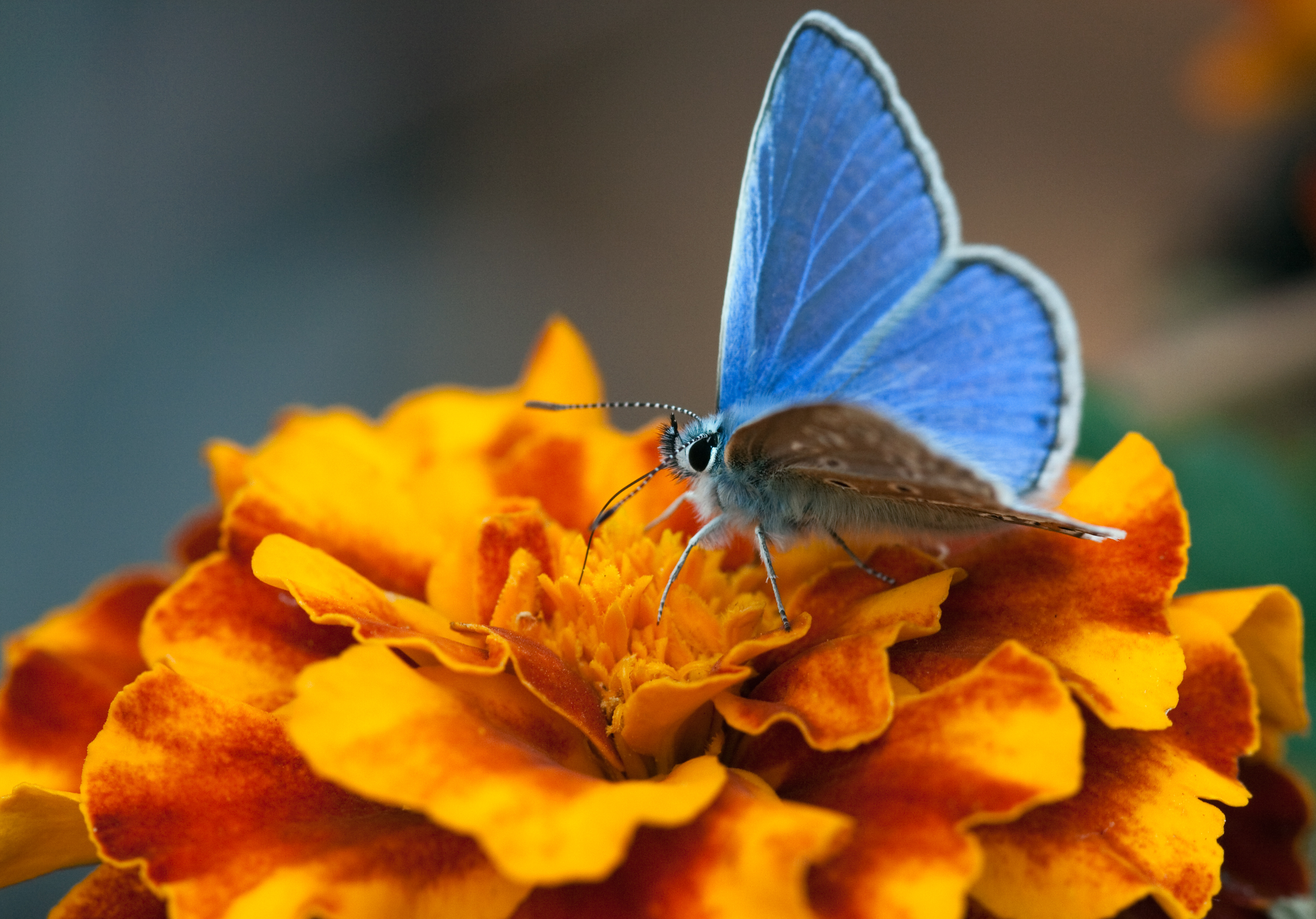Plant Pots For Pollinators is for everyone. You don’t need a garden or green fingers to be able to grow a plant that will help our struggling butterflies and bees. The other attraction of this project is that you can get hold of everything you need to take part without breaking the bank.
The great thing about container gardening is that you can plant into any object that will hold enough soil. In the Butterfly Conservation carpark I’ve successfully grown Catmint in an Easter basket, Shasta daisies in an old washing up bowl and Cosmos in the empty office coffee tins. Just remember to drill some drainage holes in the bottom of your makeshift pot to prevent your plant becoming waterlogged.
 You may find a suitable container lurking in your loft, garage or shed. Scour car boot sales and junk shops and you could uncover some really interesting objects to plant in. An unusual ‘pot’ on your front doorstep might generate enough interest from the neighbours that you can persuade them to join in. Your street could become a flowery super highway for pollinators. The more people who take part in your neighbourhood the easier it is for butterflies to move through built up areas and reach suitable breeding habitat.
You may find a suitable container lurking in your loft, garage or shed. Scour car boot sales and junk shops and you could uncover some really interesting objects to plant in. An unusual ‘pot’ on your front doorstep might generate enough interest from the neighbours that you can persuade them to join in. Your street could become a flowery super highway for pollinators. The more people who take part in your neighbourhood the easier it is for butterflies to move through built up areas and reach suitable breeding habitat.
The six plants recommended in the free guide are widely available in garden centres at this time of year. Younger plants are cheaper and you will get more satisfaction from seeing them grow and bloom under your care. I’ve come across Marigolds, Cosmos and Dahlia on sale at supermarkets and market stalls recently. It’s also worth looking at fetes and fairs– pretty much anywhere selling plants is likely to have something suitable for pollinators that you can grow in a pot, window box or hanging basket. If you can’t find the specific flowers recommended in the shopping list, you can get more ideas on the gardening pages of BC’s website.
Soil is probably the only thing I wouldn’t recommend scrimping on. It is really important to check the bag and make sure that your compost doesn’t contain peat. Peat bogs are important habitats for many species including the rare Large Heath butterfly. When peat is extracted for commercial purposes the environment is destroyed and butterflies are left homeless. There are many alternatives available and if you only have one pot to fill you can buy small 20 litre bags for a couple of pounds from our sponsors B&Q.
 The final piece of equipment you will need to nurture your plant is a watering can. You may get lucky and be able to acquire one second-hand, but if not, you can recycle an empty plastic milk bottle. Carefully punch some holes in the cap of a well washed bottle with a knife then enlarge them with the tip of a pencil. It’s best to do this from the inside of the cap to help the water flow more freely.
The final piece of equipment you will need to nurture your plant is a watering can. You may get lucky and be able to acquire one second-hand, but if not, you can recycle an empty plastic milk bottle. Carefully punch some holes in the cap of a well washed bottle with a knife then enlarge them with the tip of a pencil. It’s best to do this from the inside of the cap to help the water flow more freely.
Plants in pots will dry out quicker and need watering more often than those in a flowerbed.
The important thing to remember when you water is to aim for the soil not the plant. Bright sunlight can scorch wet leaves so it’s best to water in the early morning or evening, avoiding the time of day when the sun is at its strongest. Don’t see the daily task of watering as a chore. Stealing a moment outdoors at dawn and dusk can be pretty magical, especially when paired with the calming trickle of waterfall.
Behavioural research has shown that flowers are a natural moderator of moods, having an immediate impact on happiness and long term positive effects on how you feel. So plant a pot for pollinators and do something good for you as well as our butterflies.
Flower power!
Catrin Hollingum
Senior Marketing and Campaigns Officer


